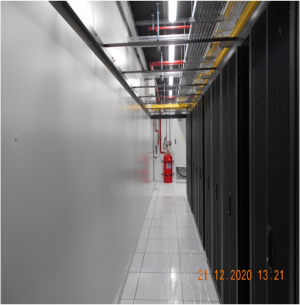
What to Know Before Building A Modular Data Center

01 Dec, 2021
Modular data centre stands for all those modular units that have independent functions, it possesses a unified input and an output interface. From the different regions of a module that forms a complete data centre, a mutual backup can be made by means of arranging the related modules. There are multiple modular forms that can be deemed as different methods for design and also the whole idea concerned can be treated as a product.
How Modular Solutions were Introduced
The costs incurred for building a data centre and maintaining it for an enterprise is always very high. The existing buildings also require proper reconfiguration and refurbishing for admitting to the altering needs of the next generation hardware. These reconfigurations and refurbishments can take a longer time span which happens to be one of the most serious limitations in an enterprise.
After the completion of building a data centre, it acts as a dead concrete structure. Therefore alike all other sectors, a data centre should also be subject to accepting better solutions. Installation of a modular data centre doesn't call for any planning permission to be acquired or investing a lump sum amount of money. These units of the modular data centres also account for return on investment, which is calculated on monthly basis.
A modular unit of the data centre was first constructed around a container that can be easily loaded into aircraft, trucks or ships for logistic purposes and transporting the modular data centre thereafter to the targeted location. The modular data centres serve the purposes of event organisers, government agencies, corporate customers and emergency rescue managers for solving critical problems. These containers can be stored by stacking them laterally or vertically on a concrete mat.
Manufacturing Design of Modular Data Centre
In the process of designing a module, there are different divisions of construction, they are modules, floors and other stages of the construction process. The modular design also comprises its use in the data centre and space layout of the functional system which once again uses a modular design.
For facility managers, modular data centres are quite an attractive option for a number of reasons. A modular data centre primarily offers its owners speed and flexibility even being constructed offsite in a controlled environment. Governed with adequate planning and proper logistic, the units of the modular data centre can be assembled ahead of time or when the remainder of a project is still being formed.
Modular units can be manufactured at an assembly plant and be preserved until it is ready for use. Therefore simultaneous constructions can be conducted while the site permission is under process and also while support construction and site work are underway. Factory-built, repetitive, modular units offer a quality of higher level because of the construction environment that is controlled indoor. Along with the quality, these units also provide the ability of making improvements perpetually throughout the process of manufacturing.
Modular Designs
Every modular data centre is different from each other. Essentially there are three main types of modular designs-
1. A complete modular data centre includes room space and infrastructure for IT equipment is fabricated offsite and transferred to the site after assembling it into a complete one piece. For convenient logistic purposes, these units of the data centre comply with the requirements of internal shipping containers of international size.
2. Various modular data centres are shipped to the site disassembled in individual components. They are designed to be assembled in a complete data centre, in modular form with IT and infrastructure room space.
3. Again, parts of the IT cabinets or data centre infrastructure can also be built totally offsite. This includes cooling system packages and equipment skids. After that, they are installed either in newly built or existing spaces. Modular data centres built in this concept limits the time required for construction on-site and also speeds up the installation. These modules can also consist of a complete enclosure or a piece of skid-mounted equipment in one single package, which is suitable for exterior installation.
Features of the Design of the Product
There exist a number of data centre modules in the product as an aggregated whole. The modules include modular products, micro modules and types of data centres in containers. On the representation of the micromodule of the cabinet in the modular products, the modular precision air conditioning, modular wiring, modular ups are commonly considered as different shelves as the basic unit. The shelves involve network and power distribution modules, wiring, refrigeration modules, monitoring, fire and several other units that operate independently.
Each and every component of the module is made ready in the factory and therefore they can be compiled as fast as possible and again if required, can also be disassembled flexibly. The data centre of container variety is considered a standardised and generalised product of modular data centres. This type of product in the data center solutions UAE provides factory prefabrication and predictive testing.
Conclusion
A large number of data centre owners considers modular components and modular data centres along with data centre wholesalers, corporations, universities and colocation providers. These organisations possess projects that require various types of non-standard IT equipment, maximum clear height, flexibility and several other desirable features.
